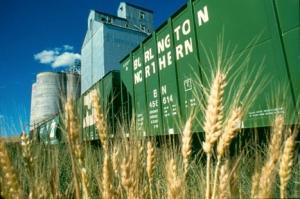Railroad service is a key component of the agricultural industry, especially in areas of the United States where there are no waterways for barge transportation.
When it comes to moving grain over long distances, railroads have a significant advantage. For example, a 100-car train unit has the capacity to move up to 9,074 metric tons, while a single truck can haul about 24 tons.
Railroads, however, serve many sectors besides agriculture, from automotive manufacturing to coal and oil. Competition between sectors can result in shortages or surpluses in the availability of railway equipment and scheduled movement of them along existing tracks. Within the agricultural sector, demand is influenced by weather-related transportation disruptions, variation in annual crop size and location, the timing of planting and harvesting, global trade patterns and commodity price fluctuations.
These and other factors can result in unexpected shifts in transportation costs, adding to the commodity price risk that agricultural producers, processors and shippers must manage.
Because of the combination of options between truck, train and barge, U.S. grain has the advantage of getting to market even if there become issues with one form of transportation. An example is in the state of Texas, railroads have discontinued service on some short segments of railways that serve a limited area.
“We’ve seen the removal or abandonment of rail switches from the main lines to local elevators,� said Wayne Cleveland, executive director of the Texas Sorghum Producers Association. “As a result, grain moves by truck from the local elevators to the export port. Additionally, much of the sorghum in the state’s southern region goes directly from the field by trucks to an export elevator at the port.�
U.S. grain farmers have closely monitored the country’s railway system for decades and have worked to keep it a viable transportation option for its customers. The National Corn Growers Association (NCGA), which represents the interests of U.S. corn farmers before the U.S. government, works hard to address any railway issues to ensure timely and efficient service during heavy shipping periods, particularly at harvest.
“Based on the large railroad volumes of corn and corn products and relatively short peak in seasonal shipping periods, improvements to rail transport are critically important for NCGA members,� according to the association’s official policy on the topic.



